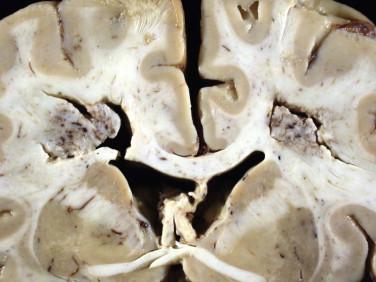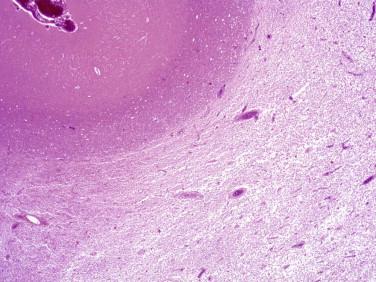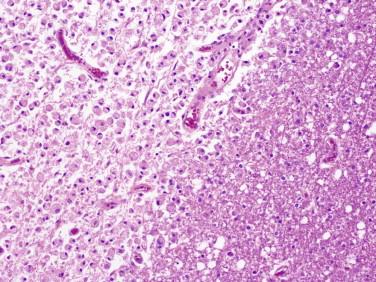Physical Address
304 North Cardinal St.
Dorchester Center, MA 02124
General term used here to describe a white matter demyelinating/destructive process caused by innumerable therapeutic and toxic agents
May affect all ages, overall prevalence unknown
Abused substances
Inhalants (glue, spray paint, etc.)
Cocaine, heroin, “ecstasy”
Heroin vapor inhalation (“chasing the dragon”)
Ethanol: greater white matter loss than nonabusers over time
Chemotherapy (especially intrathecal methotrexate)
Whole brain irradiation (up to 28% affected)
Immunosuppressive therapy
Antimicrobials (amphotericin B)
Carbon monoxide
Arsenic
Herbal remedies (“phytomedicine”)
Occupational (e.g., organic solvents)
Onset sometimes delayed (weeks/months)
Initial presentation: alterations in executive functioning (common)
Psychiatric, focal neurologic deficits
Severe toxicity: dementia, spasticity, mutism, apathy, coma
Prognosis varies, exposure parameter dependent
Mild cases potentially reversible
Corticosteroids, leucovorin (methotrexate), chelation (arsenic), anticoagulants
Diffuse edema; necrosis and discoloration of the white matter
Patchy to widespread white matter edema with extensive macrophage infiltrates
Demyelination, relative axon preservation
Subcortical U-fiber sparing
Severe cases: axonal injury (spheroids/varicosities/oligodendroglial loss/necrosis)
Ethanol
Marchiafava-Bignami disease: necrosis of corpus callosum
Heroin
Intravenous: brain stem, cerebellum sometimes spared
Inhalation (“chasing the dragon”): severe spongiform change (symmetrical), axonal loss, multivacuolated oligodendroglia
Solvent inhalation
Hydrocephalus ex vacuo, white matter pallor, macrophages: periodic acid-Schiff (PAS)+/birefringent inclusions
Amyloid precursor protein (axonal spheroids)
Luxol fast blue (LFB)/PAS
Genetic leukodystrophies
Demyelinating diseases (e.g., multiple sclerosis [MS])
Infections
Metabolic
Vascular (e.g., cerebral autosomal dominant arteriopathy with subcortical infarcts and leukoencephalopathy (CADASIL), Binswanger disease)
Delayed post-hypoxic leukoencephalopathy



Encephalopathy due to toxic exposure to carbon monoxide (CO) gas
Become a Clinical Tree membership for Full access and enjoy Unlimited articles
If you are a member. Log in here